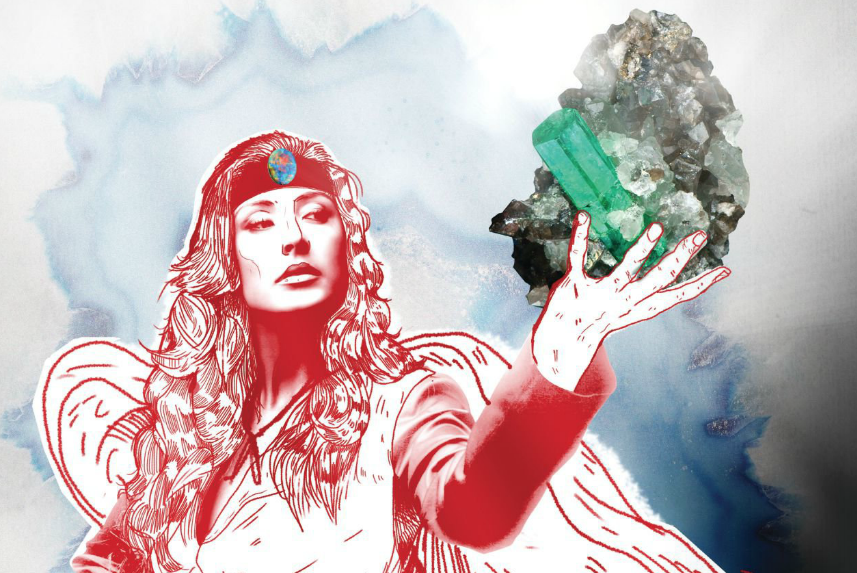
Story by TANYA DUKES
HOW DO YOU HUE?
Paired with imaginative designer concepts, colored gemstones can drive greater profits
and stronger customer loyalty
If one were to judge only by last year’s top jewelry and gemstone auctions, color would be the hottest thing going. Seven out of 10 of the most expensive lots featured colored stones, like the Blue Belle of Asia, which at $17.3 million set a new world record for the highest price paid for a sapphire, and the $27.4 million Hutton-Mdivani necklace, the most expensive jadeite jewelry ever sold at auction.
Beyond the elite circles of Sotheby’s and Christie’s billionaire shoppers, however, colored gemstones represent a relatively modest amount of the jewelry business. According to the 2014 Jewelers of America Cost of Doing Business Survey, colored gemstones accounted for about 8 percent of U.S. jewelry store sales by value. It’s a figure that most retailers can improve on with the insights of a few industry experts, the right designer jewelry mix and an appropriately-trained sales staff. In fact, in combination with designer creativity, colored gemstones offer an opportunity for increased sales and profitability that no store owner should ignore.
casual color
“Even though there are gemstones that are more valuable than diamonds, the average person thinks they’re a riskier purchase. The public believes diamonds have an inherent value that doesn’t need an explanation,” says jewelry designer Suzy Landa, whose collection features both diamonds and a robust selection of fine colored stones, like yellow beryl and blue zircon. She encourages retailers to give colored gemstones their due. “We’re living in a very informal time. People want jewelry with an understated look, and colored stones are a neutral, un-blingy alternative to diamonds,” Landa says. “A big colorful piece, like an aquamarine ring, makes an impact, but doesn’t show off.”
And when it comes to pieces that feature special, high-end gemstones, Landa has learned that it helps to give retailers context about the background of a colored stone. “Many times it just takes a few talking points to make a customer feel comfortable, but if they want a certificate to verify the stone’s type or origin, I don’t hesitate to provide one.”
Advertisement
a sure thing
In those cases, “the best way [for retailers] to know what they’re buying or selling is by obtaining a colored stone report from an independent third-party laboratory like the Gemological Institute of America,” says GIA instructor Brenda Harwick. GIA’s colored stone reports don’t provide a grade (except for ruby and sapphire color), but they detail quality factors like color, clarity, cut and carat weight, whether they are natural or synthetic, and if they have been treated to enhance appearance. The reassurance provided by a black-and-white evaluation of a gemstone often helps potential colored stone converts commit to a significant purchase.
digging in
Gemfields, the world’s largest publicly traded gemstone mining company, adheres to the importance of certification, too, referring to it as the “fifth C” that “fully discloses the characteristics of a stone,” according to Gabriella Harvey, director of cut and polished sales. With mines in Zambia and Mozambique that produce emerald, ruby and amethyst, the company’s mission is to be the global leader in the responsible mining of colored gemstones. To that end, Gemfields eliminated harmful chemicals from its mining practices and instituted open auctions to foster mine-to-market transparency. Meanwhile, a global ad campaign with actress Mila Kunis and partnerships with a roster of hipper-than-thou designers like Solange Azagury-Partridge, Anndra Neen and Fernando Jorge promote colored stones as prized luxury goods.

young couples want something personal that represents them.”
Jennifer Gandia, co-owner of New York City boutique Greenwich Jewelers, “prefers vendors who work with ethical mines. It’s an extra step that we take because we want to do it, and it’s something we share with customers so they know they’re not buying another mass commoditized product.” One group that’s especially interested in that message, and in colored gemstones, is millennial shoppers. Gandia finds that customers in their 20s and early 30s “are making less money than earlier generations did at the same age.” When it comes to bridal and engagement jewelry, “they’re open to rings that’s aren’t super traditional. Young couples want something personal that represents them, and choosing a colored gemstone means spending less in the process.” Engaged millennials are the prime market for the pastel sapphires that Gandia reports have become increasingly scarce.
Typically, Greenwich Jewelers “sells color well,” Gandia says. “We’re an education-heavy store and most of our jewelry specialists are graduate gemologists. If you teach customers about gemstones and their value factors, they can make an informed decision.”
show and tell
One of the resources she refers to for continuing colored gemstone education is the American Gem Trade Association (AGTA). CEO Douglas Hucker says the organization of jewelry professionals — mostly gem dealers, retailers and manufacturers — is “devoted to an ethics driven approach to selling and protecting the reputation of colored gemstones.” AGTA members must demonstrate that all gemstone enhancements and treatments are being disclosed in their businesses. “Our research tells us the consumers don’t mind if stones are treated; they mind if it’s not disclosed,” Hucker says.
To help retailer members convey details about colored stones to their customers, AGTA offers sales-oriented online colored stone education and point-of-sale brochures explaining gemstone treatments and tips on how to buy stones. Hucker explains, “Customers have no idea how important the information is until it’s presented to them.”
color curation
For Ashley Davis of Davis Jewelers in Louisville, KY, selling colored gemstones means constantly tweaking her product assortment to meet shifting demand. “Semi-precious stones were once regarded as birthstone jewelry only, but now they’re an important element in our fashion pieces,” she says. “The ability to have a big look at a relatively modest price — at least compared to diamond pieces — gives gemstone jewelry a greater perceived value and sense of style.”
Her focus is on finding indie jewelers to create the right product mix. “My clients are seeing color in their magazines and on the runways and they want us to translate it into jewelry they can wear every day.” At the moment, that means soft pairings like amethyst and rose gold and pieces that combine a riot of multicolored semi-precious stones in different sizes and shapes. It’s an approach that’s paid dividends so far.
Advertisement

JADE
Erica Courtney pendant in 18K yellow gold featuring a hand-carved lavender jade dragon and diamonds (1.01 TCW)
MSRP: $30,000
(323) 938-2373
ericacourtney.com
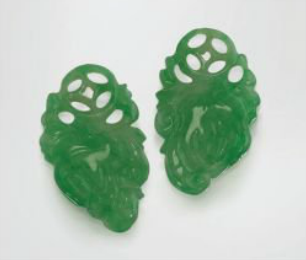
jade
FACTS & STATS
“Jade” is an umbrella term that encompasses two different minerals: nephrite and jadeite, which differ in chemical composition and color.
Jade is available in a variety of colors that includes red, black, violet, yellow and green.
Before it was treasured as a gemstone, its toughness made it an important material for weapons, statues and bowls.
Advertisement
TELL ’EM THIS
Take your pick of jewelry styles. Jade’s smooth texture suits cabochon shapes and intricate carvings.
DESIGNERS MAKING IT SHINE
Roberto Coin, Annette Ferdinandsen, Monique Péan
 PEARL
PEARL
Yvel 18K yellow gold earrings with cream baroque South Sea pearls set with diamonds (10.38 TCW)
MSRP: $59,280
(855) 805-8841
yvel.com
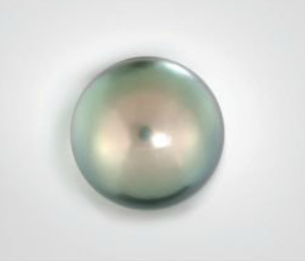
PEARL
FACTS & STATS
Creating cultured pearls requires human help. The process begins when a foreign object — often a shell bead — is placed within an oyster.
Natural pearls form accidentally, and were the only kind of pearl available before the invention of culturing technology in 1893.
Pearl quality is assessed by the qualities of size, shape, color, lustre, surface and nacre quality.
The four main pearl categories are Akoya, South Sea, Tahitian and freshwater.
TELL ’EM THIS
Pearls are among the most universally popular gems for a reason. They’re available in a vast number of sizes, shapes and colors and prices.
DESIGNERS MAKING IT SHINE
Jordan Alexander, Vincent Peach, Suel
 OPAL
OPAL
Pamela Huizenga 18K gold pendant with black opal, emeralds and diamonds | MSRP: $125,000
(772) 871-0033
pamelahuizenga.com
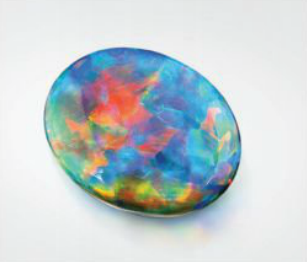
OPAL
FACTS & STATS
Play-of-color is the most important factor in judging an opal’s quality. The most desirable prominent color is red.
Opals contain up to 20 percent water. Exposure to extreme heat, dryness or light may cause cracking.
In Australia, where most opals are mined, the gem — counter to superstitions elsewhere — is considered lucky.
Opals are frequently assigned to types — black, white, fire — according to their background color.
TELL ’EM THIS
Every opal is different. The unique alignment of silica spheres in each gem creates a distinct display of light and color.
DESIGNERS MAKING IT SHINE
Irene Neuwirth, Brooke Gregson, Kimberly McDonald
 CITRINE
CITRINE
Dean Harris citrine tablet earrings in 18K white gold with brilliant-cut white diamonds | MSRP: $4,230
(212) 684-9857
deanharris.net
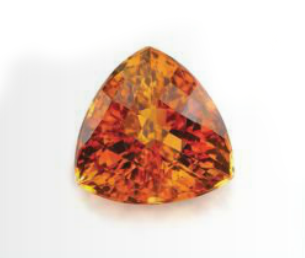
CITRINE
FACTS & STATS
Citrine is part of the quartz family. It was once confused with topaz because the gems share similar yellow and orange colors.
Yellow quartz occurs in nature but is rare. Most citrine is heat-treated amethyst.
Brazil is a prime source for the citrine, along with mines in Tanzania, Namibia and Zambia.
TELL ’EM THIS
Citrine has vibrant color, lively sparkle and is widely available (and affordable) in many sizes. It has the durability to withstand constant wear.
DESIGNERS MAKING IT SHINE
Marie-Hélène de Taillac, Nak Armstrong, Jane Taylor
 RUBY
RUBY
Just Jules earrings in 14K gold with rose-cut ruby slices (21.60 TCW) and full-cut diamond pavé (0.62 TCW) | MSRP: $6,000
(480) 860-6211
justjules.com

RUBY
FACTS & STATS
Ruby is the red form of the mineral corundum, and is second only to diamond on the Mohs Hardness Scale.
Light emitted by a ruby was used in the very first laser.
Stones in a pure red color without the excessive presence of purple or brown are the most valuable.
TELL ’EM THIS
Provenance is just one part of assessing a ruby. Burma is known for producing some exceptional stones, but fine gems come from other locations, including Mozambique and Madagascar.
DESIGNERS MAKING IT SHINE
Coomi, Robert Procop, Amrapali
 EMERALD
EMERALD
Marina B 18K yellow gold and Zambian emerald necklace MSRP: price on request
(212) 644-1155
marinab.comt
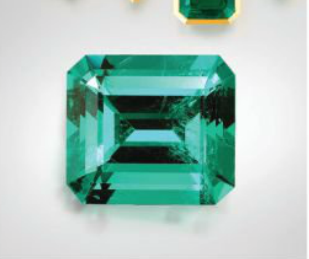
EMERALD
FACTS & STATS
Emeralds are the most well-known gemstone in the beryl group.
They’re more brittle than gems like sapphires or spinels and should be cut and mounted with extra care to protect them from breakage.
Most emeralds have easily visible inclusions whose characteristics often reveal their places of origin. Eye clean stones are exceptionally rare and valuable.
TELL ’EM THIS
Emeralds have been prized for millennia and associated with mystical powers since the time of the first Egyptian emerald mines in 330 B.C. Today, the finest quality stones rival some diamonds in value.
DESIGNERS MAKING IT SHINE
Judy Geib, Jemma Wynne, Ila & I
 AQUAMARINE
AQUAMARINE
Suzy Landa 18K white gold ring with an aquamarine cabochon (21.70 TCW)
MSRP: $3,960
(212) 874-2346
suzylanda.com
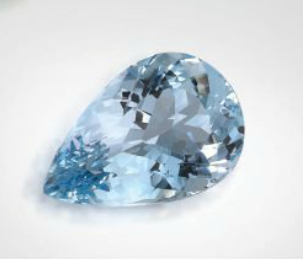
AQUAMARINE
FACTS & STATS
Aquamarine ranges from pastel to deep blue; intensely blue stones fetch the highest prices.
Inclusions aren’t as prevalent in aquamarines as in emeralds, though both are beryls. Gem collectors look for stones that are eye-clean.
Though often compared to heat-treated blue topaz, aquamarine in a comparable color is much more valuable.
TELL ’EM THIS
The clarity and brilliance of aquamarine makes is well suited to artistic designer cuts and traditional gemstone shapes.
DESIGNERS MAKING IT SHINE
Jorge Adeler, Pippa Small, Penny Preville
 SPINEL
SPINEL
Ivy pink spinel and diamond ring in 18K gold
MSRP: $17,200
ivynewyork.com
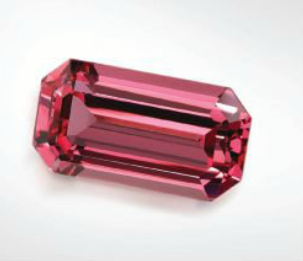
SPINEL
FACTS & STATS
Throughout history, spinels were commonly mistaken for rubies. The 170-carat Black Prince’s ruby in the British Imperial State Crown is really a spinel.
The most valuable spinels are vivid red and cobalt blue, but they also come in black, purple and pink tones.
Red spinel gets its color from chromium, which is also responsible for the color of rubies and emeralds.
TELL ’EM THIS
Their combination of varied color, brilliance and hardness makes spinels ideal for all jewelry uses and is a favorite of gemstone connoisseurs.
DESIGNERS MAKING IT SHINE
Syna, Ten Thousand Things, Munnu
 TANZANITE
TANZANITE
Mimi So 18K gold Wonderland tassel necklace with tanzanite beads, emerald and diamonds
MSRP: $198,000
(212) 300-8620
mimiso.com
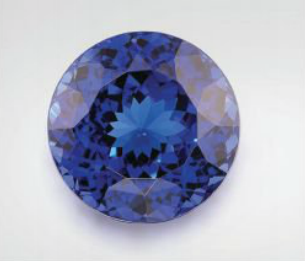
TANZANITE
FACTS & STATS
Tanzanite is one of the world’s newest gemstones. Masai tribesmen near Mount Kilimanjaro discovered it in 1967.
Deep blue stones are highly desirable; the finest color usually appears in stones that exceed 5 carats.
Most tanzanite attains its purplish blue color after heat treatment; when unearthed, the stones usually appear brown or gray.
TELL ’EM THIS
Tanzanites are rarer than diamonds and are found in only one place on Earth.
DESIGNERS MAKING IT SHINE
Cathy Waterman, Arman, Arunashi
 SAPPHIRE
SAPPHIRE
Lauren Harper Empress cuff in pink sapphires and black gold | MSRP: $28,000
(312) 543-1687
laurenharpercollection.com
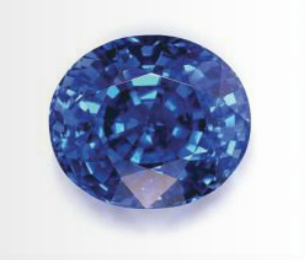
SAPPHIRE
FACTS & STATS
Sapphires are part of the mineral species corundum and can be any color except red (which is classified as ruby).
Corundum in colors other than red or blue are known as fancy sapphires and are typically more rare than the classic blue variety.
Padparadscha sapphires — a variety in an orange-pink color — are the rarest of fancy sapphires.
TELL ’EM THIS
Sapphires, especially of the coveted Kashmir variety, are the benchmark by which other blue gemstones are judged.
DESIGNERS MAKING IT SHINE
Marco Bicego, Mallary Marks, Adel Chefridi
 GARNET
GARNET
Omi Privé spessartite garnet and diamond ring handcrafted set in platinum | MSRP: $20,000
(877) 664-4367
omiprive.com
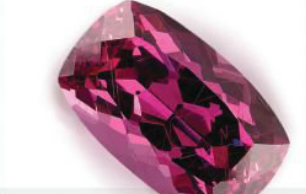
GARNET
FACTS & STATS
Garnets are a group of mineral species that are closely related and share a common crystal structure but have different chemical compositions.
Unlike many gems, garnets typically are not treated to enhance color or clarity.
Red garnets are the most common and were favored by pharaohs and nobility during the Middle Ages.
TELL ’EM THIS
Color is the key characteristic of garnets. The gems are available in colors from yellow to pink to green, each with varying rarity. Some, like demantoid garnets, are typically available in small sizes only.
DESIGNERS MAKING IT SHINE
Mark Davis, Sydney Lynch, Ippolita
 TURQUOISE
TURQUOISE
Amáli woven turquoise ring in 18K gold | MSRP: $970
amalijewelry.com
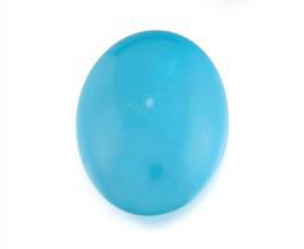
turquoise
FACTS & STATS
Today, most turquoise comes from the United States and China, but Iran has been a classic source for some of the finest examples.
Turquoise without visible matrix — dark veins that are traces of the host rock — are most valuable, though some buyers prefer the finely lined “spiderweb” variety.
TELL ’EM THIS
Evenly colored, intense medium blue turquoise has the highest value, but it occurs in shades like pale blue and acid green and in a wide range of textures, too.
DESIGNERS MAKING IT SHINE
Jennifer Meyer, Elisa Solomon, Pamela Love
 TOURMALINE
TOURMALINE
Babette Shennan flower earrings in carved pink tourmaline (21.62 TCW), white diamonds (0.16 TCW) and orange diamonds (0.20 TCW) set in platinum
MSRP: $19,000
(650) 450-0259
babetteshennan.com
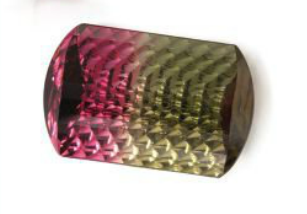
tourmaline
FACTS & STATS
Tourmaline has the most color variety of any gemstone family; it includes every hue in the visible spectrum.
Throughout history, it was mistaken for other colored gems, until it was recognized as a distinct mineral series in the 1800s.
Their pyroelectric property means that the stones actually heat up in display case lighting, sometimes causing them to attract dust.
TELL ’EM THIS
Tourmalines often feature more than one color in a single stone; bi-color gems are highly collectible.
DESIGNERS MAKING IT SHINE
Melissa Joy Manning, Jaime Joseph, Rosanne Pugliese
 LAPIS LAZULI
LAPIS LAZULI
Katie Decker 18K yellow gold Lotus pendant with lapis (53.00 TCW) and diamonds (0.73 TCW) | MSRP: $4,600
(713) 686-8185
katiedecker.com
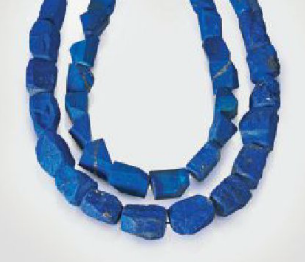
lapis lazuli
FACTS & STATS
Lapis Lazuli is a rock composed primarily of lazurite, calcite and pyrite, which gives it a hint of metallic sparkle.
It’s had a multitude of applications throughout history: Cleopatra VII wore powdered lapis as eye shadow and Old Masters ground it into ultramarine blue pigments for their paintings.
The mountains of Badakshan, Afghanistan produce the finest lapis; other key sources include Chile and Lake Baikal, Siberia.
TELL ’EM THIS
Lapis makes beautiful beads, inlays and cabochons, all shapes that show off its color and won’t abrade easily.
DESIGNERS MAKING IT SHINE
Eva Fehren, Me & Ro, Lauren K
 amethyst
amethyst
Goshwara amethyst cushion cabochon ring with diamonds in 18K gold | MSRP: $9,850
(212) 937-9727
goshwara.com
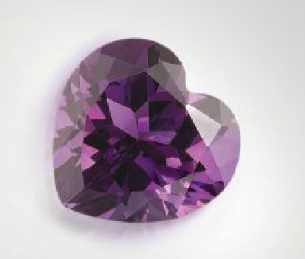
amethyst
FACTS & STATS
Amethyst is the purple variety of the mineral quartz and the birthstone for February.
Until large reserves of the gem were discovered in South America, amethysts were considered as precious as sapphires, emeralds and rubies.
The most sought after amethysts have a reddish purple or a uniformly rich purple tone.
TELL ’EM THIS
Even fine varieties of amethyst are affordable; prices per carat don’t climb considerably for larger stones.
DESIGNERS MAKING IT SHINE
Larkspur & Hawk, Alexis Bittar Fine, Renee Lewis
 KUNZITE
KUNZITE
Jack Kelége platinum ring with a kunzite center (21.57 TCW) and round white diamonds (2.35 TCW)
MSRP: $19,900
(877) 653-5343
jackkelege.com
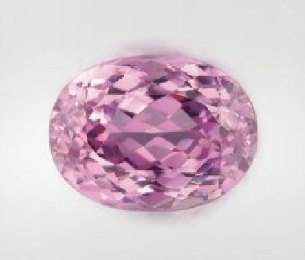
kunzite
FACTS & STATS
A relatively new gem, kunzite was discovered in San Diego County, CA, in 1902.
The gem is named for George Frederick Kunz, the Tiffany & Co. gemologist that first identified the stone.
Whether natural or enhanced, light and heat can cause a kunzite’s color to fade, and they should be stored in a dark container.
TELL ’EM THIS
Available in tones from baby pink to lilac, usually kunzite has very few inclusions and can be found in large sizes at relatively accessible prices.
DESIGNERS MAKING IT SHINE
Tito Pedrini, Lorenz Baumer, Alexandra Mor
 ALEXANDRITE
ALEXANDRITE
Monica Rich Kosann 18K yellow gold Secret ring with faceted cushion-cut color change alexandrite with diamond accent stones
MSRP: $175,000
(800) 251-3141
monicarichkosann.com
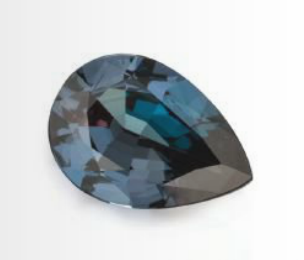
alexandrite
FACTS & STATS
A rare variety of the mineral chrysoberyl, alexandrite is color change gemstone that appears green in daylight and red or purplish in incandescent light.
Alexandrite deposits were originally found in the Ural Mountains of Russia in 1830. The stone captured the country’s imagination because its red-green color change matched the imperial flag.
The more distinct the color change, the more desirable the stone.
TELL ’EM THIS
Alexandrites, like other chrysoberyls, have a hardness of 8.5. They’re as durable as they are rare.
DESIGNERS MAKING IT SHINE
Laura Medine, Oscar Heyman, Coast Diamond
 PERIDOT
PERIDOT
Carelle After Dark brooch in 18K yellow gold with peridot (6.42 TCW) and diamond | MSRP: $7,730
(212) 997-1156
carelle.com
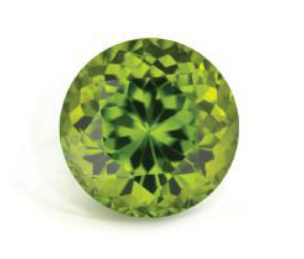
peridot
FACTS & STATS
Zabargad, an island in the Red Sea, was the earliest source of peridot. Stones from its now-depleted mines command a premium.
Today most fine peridot comes from Myanmar or Pakistan; rare extraterrestrial examples have been recovered from pallasite meteorites.
Peridot is the birthstone of August and the gemstone for the 15th anniversary.
TELL ’EM THIS
There’s a peridot for everyone. It spans a wide spectrum of green hues, from yellow-green and olive tones to deep grassy green.
DESIGNERS MAKING IT SHINE
Zaiken, Delfina Delettrez, Ray Griffiths
 FANCY COLOR DIAMOND
FANCY COLOR DIAMOND
Rahaminov fancy yellow trillion (1.01 TCW) diamond pendant necklace accented with fancy yellow melee diamonds set in 18K yellow gold | MSRP: $16,060
(213) 622-9866
rahaminov.com
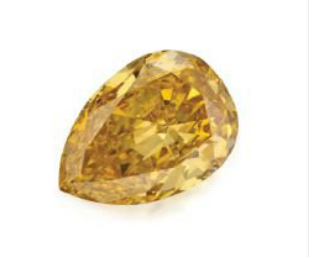
fancy color diamond
FACTS & STATS
Fancy color diamonds are typically cut to intensify color rather than light return.
When it comes to fancy color diamonds, low clarity may not have a significant impact on value, especially for rare stones.
Different phenomena create distinct colors: boron impurities in a diamond’s lattice of carbon atoms creates blue hues; the presence of nitrogen results in yellow.
TELL ’EM THIS
Only one in 10,000 diamonds has natural fancy color; they’re the rarest of all gems.
DESIGNERS MAKING IT SHINE
Todd Reed, Xiao Wang, Christian Tse
 TOPAZ
TOPAZ
Amy Glaswand 18K gold earrings with blue topaz baguettes | MSRP: $3,500
(917) 754-0001
amyglaswand.com

topaz
FACTS & STATS
Colorless topaz is widely available. It’s often treated with a combination of irradiation and heat to achieve other colors, especially blue.
The gem naturally occurs in hues of yellow, orange, pink and brown; rare red specimens known as imperial topaz are less than 0.5 percent of all topaz.
Brazil is the major source of topaz, but it’s found in sites all over the world, including Australia, Mexico and Nigeria.
TELL ’EM THIS
Topaz is a very democratic gem, there’s a huge palette of choices, and prices vary widely based on the hue you choose.
DESIGNERS MAKING IT SHINE
Mark Schneider, Vicente Agor, SheBee Gem